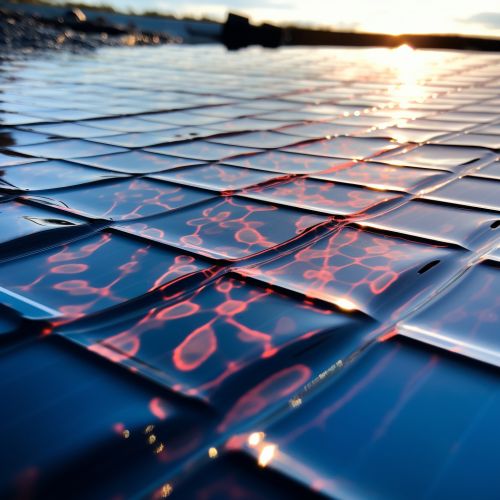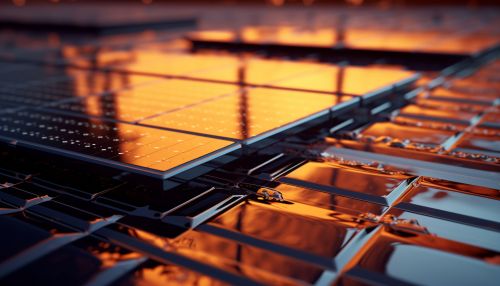Photovoltaic cell
Introduction
A photovoltaic cell, also referred to as a solar cell, is a device that converts light into electricity using the photovoltaic effect. This process involves the creation of electric current or voltage in a material upon exposure to light. Photovoltaic cells are an integral component of photovoltaic systems which generate solar power by using solar panels composed of a number of cells.


History
The concept of photovoltaic cells dates back to 1839 when French physicist Edmond Becquerel discovered the photovoltaic effect. However, it was not until 1883 that the first photovoltaic cell was built by American inventor Charles Fritts. This early cell was made from selenium wafers and had a conversion efficiency of less than 1%. The development of silicon-based photovoltaic cells in the mid-20th century significantly improved the efficiency of these devices.
Working Principle
Photovoltaic cells operate on the principle of the photovoltaic effect. When light photons hit the cell, they may be absorbed by the semiconductor material. This absorption leads to the excitation of electrons, causing them to jump from the valence band to the conduction band, thereby creating an electron-hole pair. The electric field of the junction separates these pairs, leading to current flow.
Structure and Composition
A typical photovoltaic cell consists of a p-n junction made from semiconductor material. The most commonly used material is silicon, but other materials like gallium arsenide, copper indium gallium selenide, and cadmium telluride are also used. The cell is usually coated with an anti-reflective layer to increase the absorption of light, and the top surface is patterned with a metallic contact grid to collect the current.
Efficiency
The efficiency of a photovoltaic cell is defined as the ratio of the electrical power output to the incident light power. It is influenced by several factors, including the quality of the semiconductor material, the design of the cell, and the intensity and spectrum of the incident light. The highest efficiency ever achieved in laboratory conditions is around 47%, but commercial cells typically have efficiencies in the range of 15-20%.
Applications
Photovoltaic cells are widely used in a variety of applications, ranging from small devices such as calculators and watches to large-scale solar power plants. They are also used in remote power systems for cabins, telecommunications equipment, and remote sensing. In addition, photovoltaic cells are an essential component of space vehicles, where they provide power for onboard systems and instruments.
Environmental Impact
While photovoltaic cells provide a renewable and clean source of energy, their production involves some environmental impacts. These include the use of hazardous materials, energy-intensive manufacturing processes, and end-of-life disposal issues. However, the environmental benefits of using solar energy significantly outweigh these impacts.
Future Developments
Research is ongoing to develop new materials and designs to increase the efficiency and reduce the cost of photovoltaic cells. Emerging technologies include thin-film solar cells, organic solar cells, and perovskite solar cells. In addition, there is increasing interest in the development of solar cells that can operate efficiently under low-light conditions.
